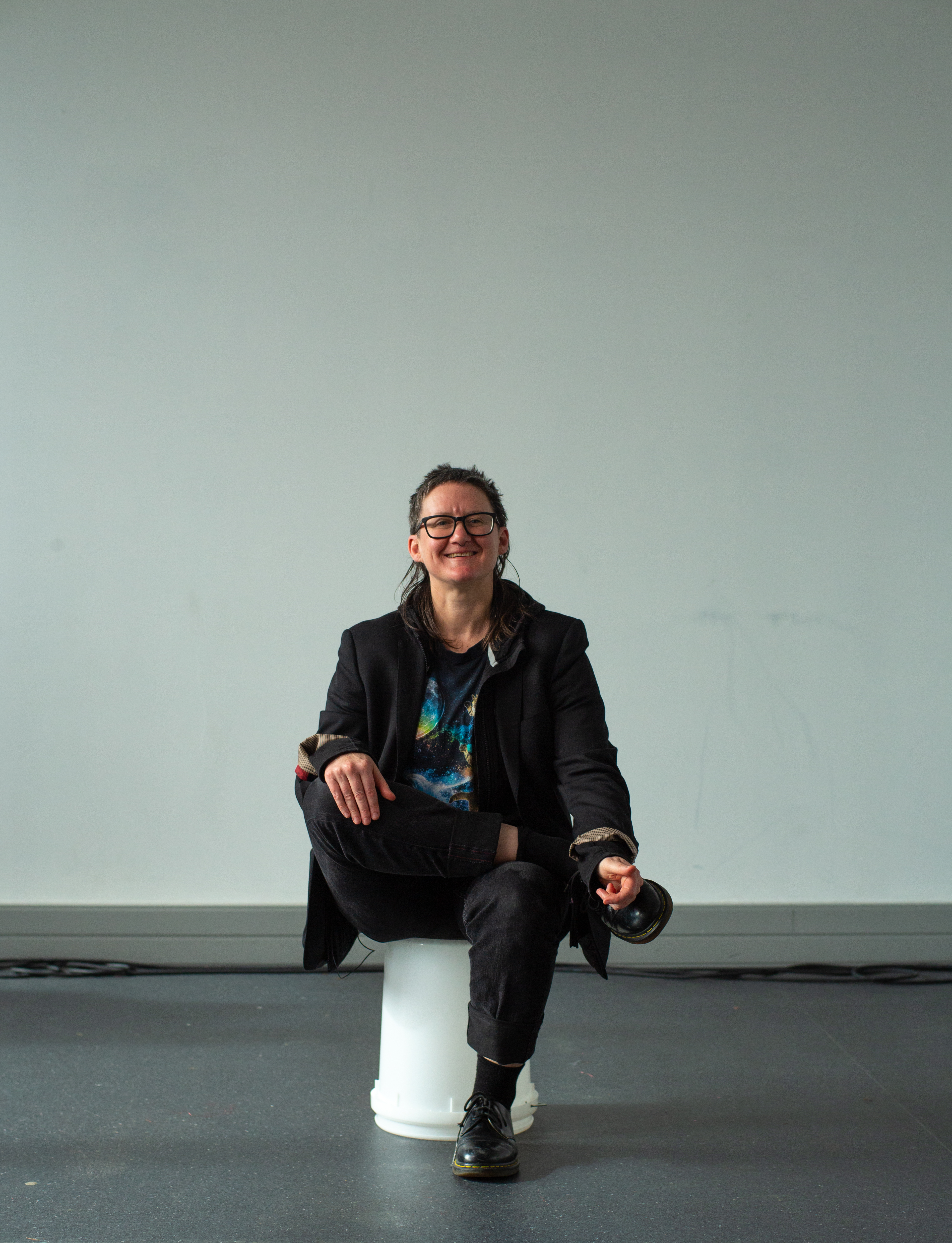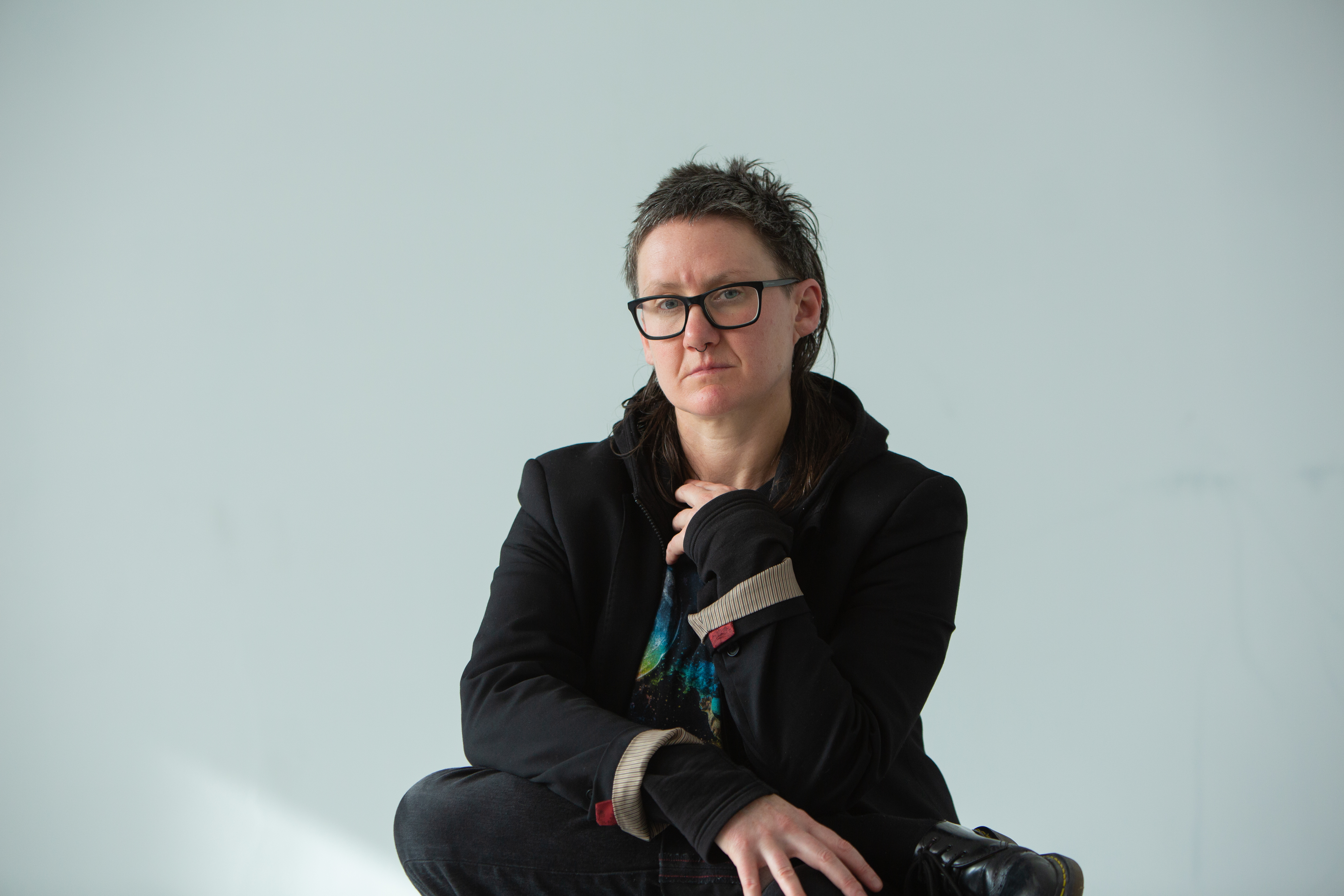We write
great emails.
If you’d like to stay in the loop with the arts and creativity in Aotearoa, get ‘em in your inbox.
If you’d like to join a movement of people backing the arts and creativity.

val smith, 2019 Arts Foundation Arts Foundation Laureate receiving the award for performing arts
val smith, 2019 Arts Foundation Arts Foundation Laureate receiving the award for performing arts
An interview with val smith
We talk to the 2019 Arts Foundation Laureate receiving the award for performing arts.
Tell us about exploring gender and sexuality in your art practice.
Gender and sexuality are quite entangled for me, but for some people they’re a separate reality. Exploring that through my art practice has been a real place of joy. It is a creative space that's allowed me to connect with other artists who are also working around gender and sexuality. It's provided me with a way to build community and a feeling of belonging that sits outside of my normative family, and that's been huge for me.
What was your experience of your education in dance?
I finished an undergrad degree at Unitec in contemporary dance in 2000. I'd been doing a lot of politically motivated performance and political street theatre through the McGillicuddy Serious Party and the anarchist feminist scene in Auckland. I loved it and I wanted to focus on performance.
When I eventually found my way onto this contemporary dance course I felt like I’d met my people. It was really amazing coming together with these people who were creative but also thinking politically. Heaps of us were feminists, really political and kind of witchy. I was lucky to be with other people who were artists simply wanting to find our own way somehow.
What is your art form?
I might use the word transdisciplinary. I'm focused on performance, but writing is a big part of my practice and collaboration. I like playing with language for the reader performatively on the page, thinking about the page as a performance space.
I'm working on an ongoing thing with my collaborator Richard Orjis, called The Bottom Manifesto. We have a practice of performing it in different contexts, inviting people to read with us and mix it up for themselves by performing it in their own way. It's long - but I'll read a little section of it.
Number one, floating islands of people's sailors, mermaids.
Number two, sticks, faggots, witches.
Number three ngahuia.
Number four, it's not about off the grid. That's about in the grid.
Number five rotting the system through fungal power.
Number six, queer bombing, queer destruction, queer after the tsunami, suicidal trees, blood and bone fertilizer, meeting friends over plant based drinks. learning to love shame, plastics and viruses.
Richard and I run a queer reading group here at AUT and have made a point to create a supportive social space for younger queer and transgender diverse artists to come and meet.

val smith, 2019 Arts Foundation Laureate
Have you published your writing before in a public space?
It does have a history because my long term collaborator in Dance Studies, Alys Longleys moves between writing and moving in a studio context. So, I've done a lot of collaborative projects which lead to performance events and publishing. And I put some work-in-progress pieces on my blog.
But The Bottom Manifesto is more like a set of principles that we can use as a guideline for making work, so I think it's different. It's going to be an open-source document, where people can edit and add to it live, so it's trying to include other voices and it's open to where it might go. It's a performance on the page.
What is the intention of the Bottom Manifesto?
It emerged out of a conversation. Richard and I were spending a lot of time together walking through Albert Park and talking about queer history. The flavour of our conversation emerged in a way that we thought would be interesting to pursue. So in some ways The Bottom Manifesto never started with a purpose, but when we look at it now it is a guideline for thinking about queer art-making or queer pedagogy, or even community-building, and has implications that we believe could be interesting to share.
You recently received a scholarship to go to Vienna.
It's a week-long residency with a symposium at the tail-end. I'm using The Bottom Manifesto methodology as a framework for developing a practice while I'm there. I'm coming with ideas, bits and pieces, and I have the week to work with a group of people to see what emerges, then that will be presented at the symposium during an all-night event with back-to-back presentations and workshops. I will end up doing some sort of performative thing. I don't exactly know what yet.
You're also going to Ireland.
I've got a week in Ireland, which is where my father's ancestral lineage connects back too. As part of the work I've been developing through my PhD, I've been channelling or attuning with oak trees and acorns here on this land and thinking about settler colonial policy. As a white person here, my practice is a lot about listening and attuning with things, places, people and animals, but in terms of the oak trees, it's a way for me to connect directly with my ancestral lands. So like the DNA connection, it feels significant for me.
When I'm in Ireland, I'm going to do a road trip for a week and connect with oak trees and sacred sites through performative activations. I'm not performing for humans, but performing for the space, building a relationship with the sites to see what emerges. There will be writing, photography and video elements. It's my first opportunity to connect with the land and my bloodlines, so it feels really important. It's got a spacious feeling about it. I've done a bunch of work leading up to it, so I can rock up, be there and see where it will lead
A lot of queer people have an experience of feeling like you don't belong, or you don't fit, especially if there's a disconnect with your biological family. This way of attuning with the land gives the ability to belong in the moment – it doesn't matter where you are, connecting with the land is a way to feel like you have a place to stand, no matter who, or what you are.
Trans-ancestors or queer-ancestors is a bit of a buzzword coming up a lot with artists that I'm looking at at the moment, finding ways to connect with those lineages and to ground yourself. I really like it, the invisible stories, the hidden ones, all of that.

val smith, 2019 Arts Foundation Arts Foundation Laureate receiving the award for performing arts
Why did you become an artist?
I used to be really into drawing as a young kid. I remember doing colouring-in competitions and getting prizes, but I wouldn't follow what was on the page, I just put in a drawing. That rebellious thing came in early.
I was one of those kids at high school who was in the art room all the time. I loved it. It gave me a place where I felt like I could be myself. Something about art teachers, they’re so supportive, they encourage you to express yourself, and I think I had a lot of feelings to work through. It gave me a way to do something that felt right for my brain, I feel like art suits the way my mind thinks, it's easy - it just feels natural.
I've tried other things like normal jobs, but I just kept getting drawn back into art and now I almost feel like it would be disrespectful not to continue because I've had so many people support me and encourage me. It doesn't feel like a duty, but it feels just so right for me now.